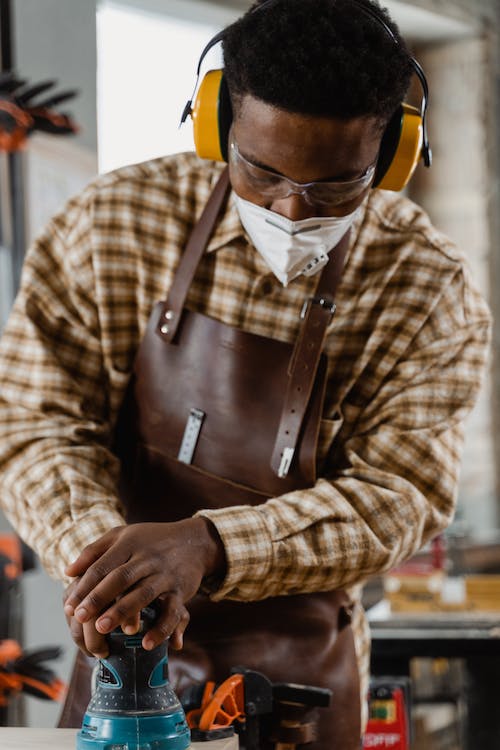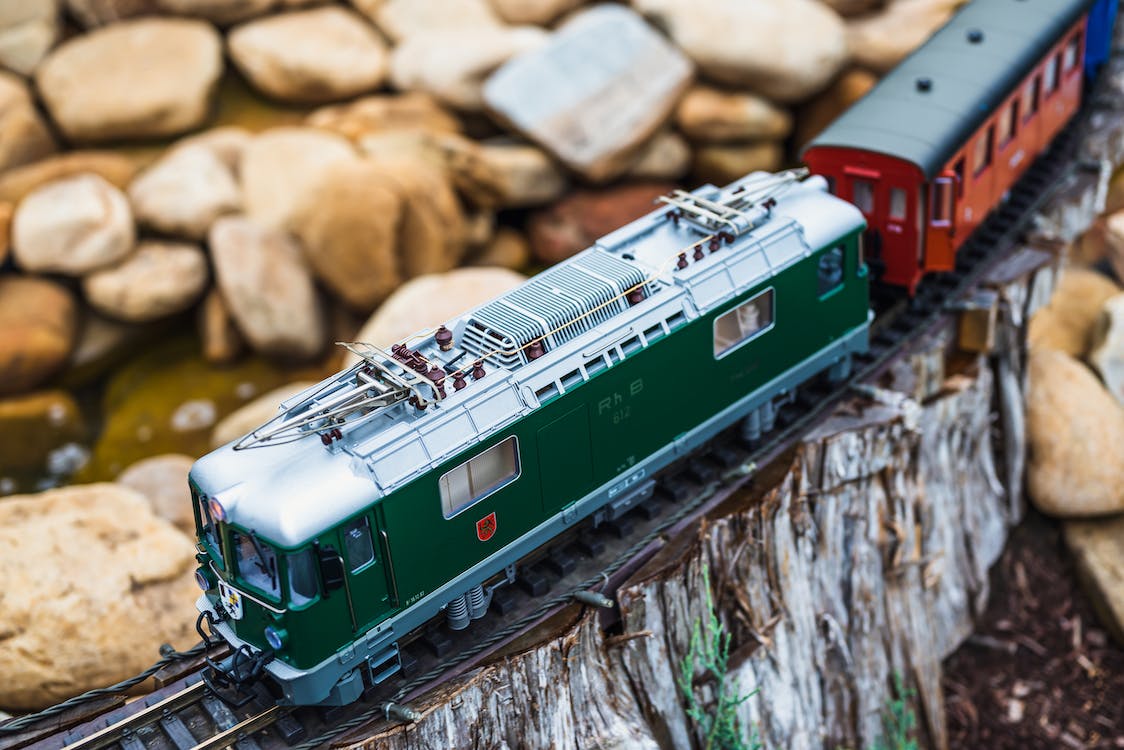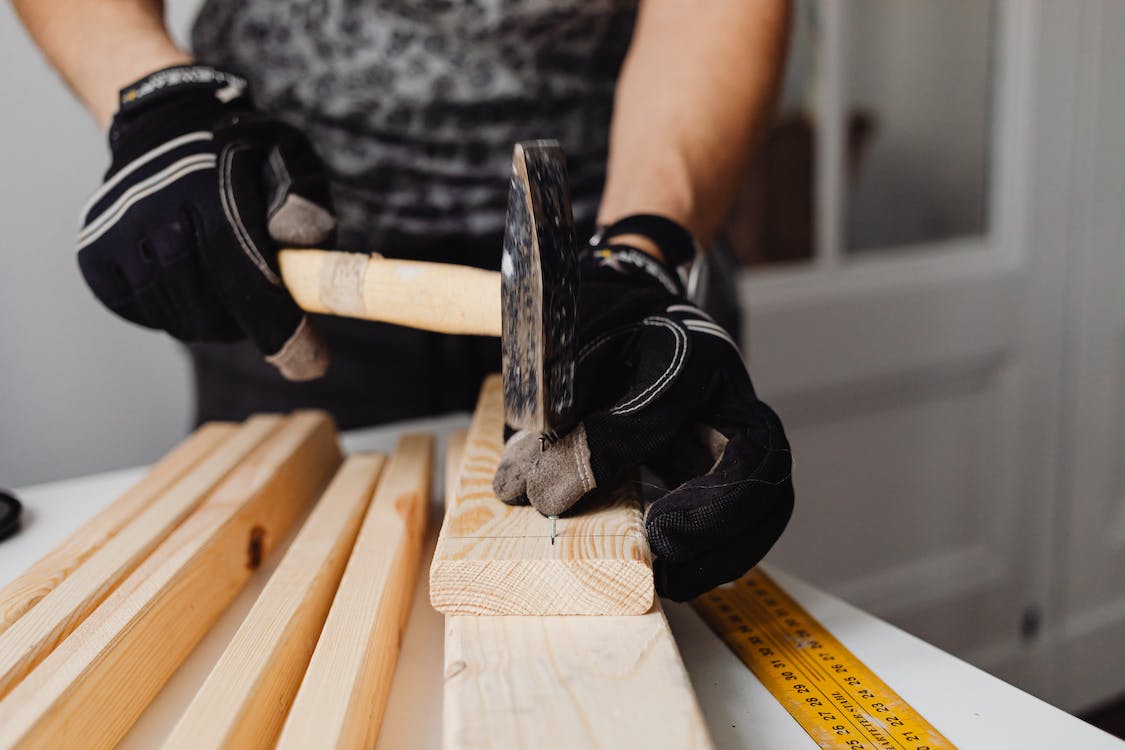Building model trains demands precision, vigilance and care. For that, you need tools that are built for the desired purpose and avoid using make-shifts tools or hacks. For your model train to work correctly, you have to ensure that each component is used according to their specifications down to the last dot. Using the right tools can help you bring together components with accuracy and precision.
With the right tools you can expedite the model building process and work more efficiently. Also, the right tools can greatly help you with quick and easy maintenance, which could be a hectic and time extensive assignment otherwise. Furthermore, using the right tools ensures durability and safety; yours and of the model. They make it easy to handle delicate and small parts without damage.
Basic Tools for Model Train Building
While the list of tools used is extensive, there are a few basic tools that every beginner should know and have.
Hobby Knife/Xacto
This is used for cutting, shaving or trimming things like wood, plastic, paper. It is also used to smooth out small edges with a light hand.
Pliers
You will require them to work with wires. They are used to bend, cut or grip and twist wires to join to components. You can also use them where it is difficult or dangerous for the fingers to reach and hold small pieces to place them in tough spots and corners.
Tweezers
These are handheld, two pronged tools used to handle and maneuver the smallest parts of the model such as screws, decals and to connect wire between two small components. The most common types are straight, pointed and curved, but there are other specialized ones too.
Glue
Evidently enough, glue is widely used in models to stick together parts in their place. The many different types of glues that are used include cyanoacrylate (super glue), white glue (PVA), and contact cement. The choice mainly depends on the material being glued.
Small Headed Hammer
This is used to nail down pins, or bend and mold metal into shapes and corners. It is used to hammer down delicate pins and nails in tight corners and with more control.
Advanced Tools for Model Train Building
Before you buy any tool, decide the specifications of the power tools after understanding the nature of assignment and your skillset. Select the speed ratings, ensure that the safety features (blade guards, auto shut off switch etc.) are available and the tools are durable. Some advanced tools that might be required even for the most basic models include:
Soldering Iron
It is used to join metals and electrical contacts all the while enabling conduction of the current. As opposed to electrical tape, it allows for smaller and cleaner electrical connections. The wiring that powers the lights, trains, sound and other electrical components should ideally be connected using a soldering iron.
Dremel Tool
Used mostly for intricate sanding and shaping or drilling and cutting in small spaces, a Dremel tool is a must have tool. It is used to carve or add intricate detail in your model and works best with metals and hard materials. It comes with different speed controls and a range of attachments to use for various tasks and use on different materials.
Airbrush
This is a spray-painting tool used to paint to add aesthetics to the train model. It comes with differently shaped nozzles. These nozzles can be used with different mixtures of paints to add creative and surreal effects like weathering, corrosion and can add hyper-realistic detail to the model. There are specific scales of model trains that are easier to airbrush because of their size. To know more about model train scales, take a look at our Guide to Selecting a Model Train Set.
Good quality tools are pricey. Invest only after thorough research and understanding. Know the extent or complexity and the detail of your project. Jot down what materials you will be working with and then select the tools. Also, keep in mind the level of skill you possess. Start with the basic tools first and move on to advanced tools after you have garnered skill and expertise with making train models.
Tools for Model Train Maintenance
To make your model durable and lasting, you need to service and practice a maintenance routine regularly. The basic maintenance tools you might want to consider include:
Track Cleaning tool
This tool looks like a brush and is used to clean accumulated dirt and debris from the tracks. To effectively use it, remove the train from the tracks, apply a cleaning solution on it, and brush the track gently. Remember to clean the tool after use.
Track Gauge
This is used to maintain the alignment, spacing and distancing of the train tracks. It ensures that the train’s tracks are of the correct measurement, so the train doesn’t derail. To use a track gauge, you have to place it between the rails and adjust the spacing until it fits accurately.
Lubricants
They are used to lessen the friction between movable parts of the train model. It protects the parts from wear and tear and ensures fluid running of the train. Select the lubricant that works specifically for the component. Use a dropper and spread the lubricant evenly. Wipe off the excess lubricant when done.
Power Tools for Model Train Building and Maintenance
Drill Presses
These can be used to drill precise, measured holes for fitting wheels, chassis and the body of the train. They can drill into wood, plastic and metals. They are also used to drill holes for wiring and other components, accurately in tighter spaces.
Rotary Tool
This multi-purpose tool can be used for a range of functions from sanding and cutting to drilling and polishing. With various attachments and accessories, it is commonly used for tasks like carving, engraving, and even grinding and cleaning rust or paint.
Soldering Station
Composed of a stand, a soldering iron and a temperature control unit, a soldering station is used to join metal contact and make electrical connections for wiring. Electric trains are arguably the ones that benefit the most when it comes to having a soldering station, as you can easily fix faulty or loose electrical wiring inside the trains. You can take a look at our Review of the Bachmann Trains Chattanooga Electric Train Set to learn more about electric trains.
Hot Wire Foam Cutter
This tool can be used to manipulate, cut, and shape foam to create various detailing elements for the train model. It comes in handy when making scenery and landscape for the model to go around the train tracks.
Safety Equipment

As you work with hazardous chemicals and power tools, it is necessary that you maintain safety while making train models. It is important to protect your eyes, especially when drilling or sanding or carving to avoid shavings and debris entering and damaging your eyes. Also, when using chemicals, it is important that the eyes and nose are covered to avoid inhaling vapours or fumes, which can be toxic.
Power tools can get very loud. It is important that you cover your ears to protect yourself from hearing impairments when using tools for long hours. Use gloves and aprons to avoid injury and getting cuts or scrapes when using sharp tools and drills. Use goggles and earmuffs or ear plugs to protect the eyes and ears respectively.
Cover your nose with dust masks or respiratory masks. Most importantly, practice, inculcate and encourage workplace safety etiquettes and routines to avoid accidents and injuries. Keep things and space clean and organize handle tools with required precaution.
Storage and Organization
Well maintained storage and keeping your tools organized ensures efficiency and space saving. Knowing where to find a tool without having to search for it in a clutter will surely help you move along quickly. Organized storage lessens the chances of accidents as the modeler will know what kind of tool is placed where and will exercise caution accordingly.
Also, good organization and proper storage extends the functioning and life of power tools, subsequently saving money on repairs, and buying new ones. To keep things organized, dedicate spaces for building and maintaining operations. Use shelves and racks with labels for quick and easy access. The workbench should be at a comfortable height. The work area must be well-lit, cleaned and inspected for safety hazards regularly.
Also ensure to keep first aid safety measures ready and never approach work without protective equipment.
Conclusion
Using the right tools can help you make well-finished, professional and accurate models. Using the tools, the right way can not only ensure accurate modeling, but allow you to work faster and without many errors. You have to ensure that you use the right combination of basic, advanced and power tools for best results. This should be based on the complexity of the model and your skillset. For beginners in model train building, they would first have to understand the basics of the hobby so that they will be able to use the tools easier. If you are one of those beginners, read our Beginner’s Guide to Model Trains.
Correctly using the right tools also makes it easy to add more detail to the model train and create a hyper-realistic model that offers an immersive experience. And lastly, use of correct tools ensure personal safety. Using them with the correct safety check can ensure that the modeler is safe from getting cut, wounded, scraped. Thus, when making a train model always work with good quality, accurate and precise tools to make sure you end up with a masterpiece.

